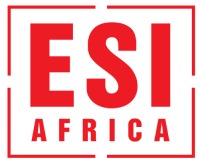IRP2025 numbers secured but implementation details lacking
Between now and 2039, South Africa will add 105,000MW of new generation capacity
While South Africa won’t be getting rid of its coal power generation capacity at a quick pace, the inevitability of green resources overtaking brownfields is spelt out in the soon-to-be gazetted Integrated Resource Plan – IRP2025.
Speaking at a press conference on Sunday, 19 October, South Africa’s Minister of Electricity and Energy, Dr Kgosientsho Ramokgopa, said: “For the first time since the recorded history of this country, especially on the production side of electricity… you are going to see that the electricity that is generated from cleaner sources of energy is going to be greater than the fossil fuels.”
The minister named hydro, nuclear, wind and solar specifically to surpass coal as the primary sources of electricity in the country.
“It’s a pivot from greenhouse gas emissions, and we are going to get cleaner and cleaner, but that does not mean that we are going to abandon our strategic minerals such as coal,” Ramokgopa explained.
He was at pains to point out that the department is taking the view that the country “does not have a coal problem, but an emissions programme problem”.
Current energy mix
“South Africa, as I stand before you, is pursuing a diversified energy mix.”
“The installed capacity, in MW terms (not necessarily what is available at any given time), 58% of the mix is coal, 10% of the mix is rooftop PV, and you know that as part of our energy action plan… one of the five outcomes of that is to accelerate rooftop solar solutions.
“Going forward, we also have an ambition of increasing rooftop solar.”
Ramokgopa broke down the current generation capacity mix as follows:
- Grid-connected solar PV, procured through REIPPPP – 10%
- 8% – wind,
- 4.5% from the diesel peaking plants,
- 4% – pumped hydro storage, and
- 3% – nuclear energy.
“Of course, you’ll see that these numbers don’t add to 100% of the mix. The remainder, which is about three percentage points, is really small interventions on hydro and biomass. They are too small for us to accommodate this in the comprehensive picture, but we do acknowledge they do play a role.”
Future plans for the energy mix according to IRP2025
Ramokgopa said going forward, the plan up to 2030 is to
- introduce 11,270MW of solar power;
- build 7,340MW on the wind side – which is about 15% of today’s installed Eskom capacity; and
- move forward with the nuclear build of 5,200MW.
The gas-to-power programme of around 6,000MW is a big part of the intervention to address baseload, as well as suppressed demand, to replace the coal baseload power that will be lost as existing power stations are decommissioned. The IPP Office has already released a RFP for a third of that gas-to-power programme.
3,100MW of battery storage and 5,400MW of distributed generation are also on the cards.
“We are not making any mention of coal here – I’m talking of new generation capacity or even extension of life of existing infrastructure.
“The point we’re making is that there is a litany of clean technology solutions that are available. What the IRP says – it instructs Eskom to go into a clean coal technology demonstration plant and that we must see the results by 2030.
“So that, having domesticated it to our own conditions at home, we need to have an appreciation of the efficacy of the solution in the South African environment.
“On the basis of those results, then we’ll be able to know what constitutes that mix going into the future.”
Beyond 2030, building out the country’s capacity
“We can see that solar PV is going to be a big part of the mix, going into the future. That’s an additional 25,000MW of solar; wind another 34,000MW, gas now ramps up to 16,000MW going into the future, 2039, then storage 8,500MW, and the distributed generation is 16,000MW.”
“Let’s put it into context, it means we are going to build Eskom two and a half times between now and 2039.”
Ramokgopa said the IRP2025 should also be seen as an investment programme of R2.2 trillion, which would constitute around 30% of the country’s GDP.
This is meant to help the country industrialise, to grow economy to create jobs and grow the economy by 3%+ by 2030.
What about alternative energy sources?
Minister Ramokgopa went to great lengths to point out that the Integrated Resource Plan is not a wish list or guide, but a government policy: “This is what is going to drive the electricity agenda in the country for the period that we are going to define.”
He also expounded on the idea that not all possible technologies have yet been incorporated into the IRP, because the department has not resolved the exact unit price of electricity that the particular source could provide.
“A typical example you will see is that we are not accounting for green hydrogen as an energy carrier because the science is still resolving the cost of that and the unit cost of green hydrogen. But the IRP does acknowledge that as a country, we have determined a path of where we want to go in relation to green hydrogen.”
Once the figures are established, Ramokgopa said the IRP would be updated accordingly.
Cover photo: Klipheuwel Wind Farm, covering over 350 hectares, is located 5km west of Caledon, in the Overberg region of the Western Cape, in the Theewaterskloof Local Municipality. Image: Globeleq


